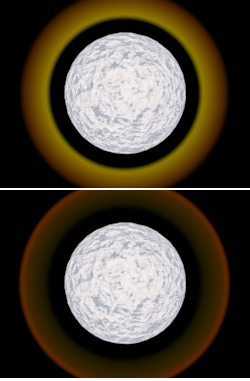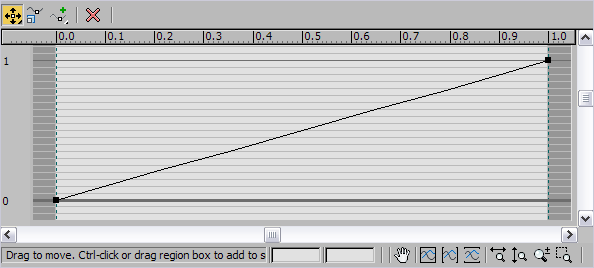The Radial Falloff dialog allows you to add weight to a particular color applied to your Lens Effect. By weighting the colors that you apply you can choose to display more of one color than another. You can also make the transition of colors gradual from one color to the next or you can create a sharp edge to the transition.

Rings with different Radial Falloff settings
The Radial Falloff graph has controls at the top for creating and moving Points on a curve on the graph below. The curve represents the range of colors you have selected in the Radial Color group box to apply to the current Lens Effect. When you open the dialog you will notice that there is already a line with a Point on each end which represents the linear transition from one color to the next. The default falloff is a fade from one color at a value of one to the other color which ends at a value of zero. This produces an effect with more intensity on the first color and a considerable fading out of the second color. By placing Points along the curve, you can drag these points to increase or decrease a colors intensity or to eliminate it altogether.
Buttons are available at the bottom of the dialog that allow you to change the display of the dialog. You can also manually enter a horizontal or vertical position by entering a value into the two entry boxes.



 Move
MoveMoves selected points in any direction. Click and hold the Move button to display the flyout where you can select a button to move in any direction, move only in the horizontal direction, or move only in the vertical direction. The Move function remains active until you click another button. The button is yellow while it is active.
 Scale Point
Scale Point
 Add Point
Add PointAllows you to add points anywhere along the Circular Falloff curve. Click and hold the Add Point button to display the flyout where you can select a button to add either a Corner Point or a Bezier Point. Click once to enable Add Point. The Add Point function remains active until you click another button. The button is yellow while it is active.
 Delete Point
Delete Point